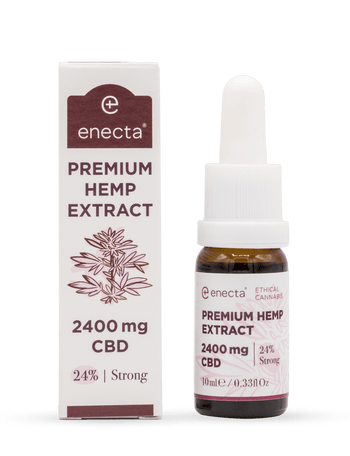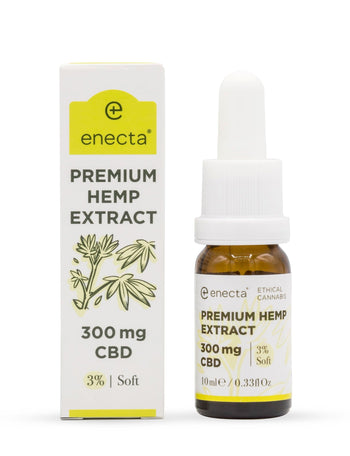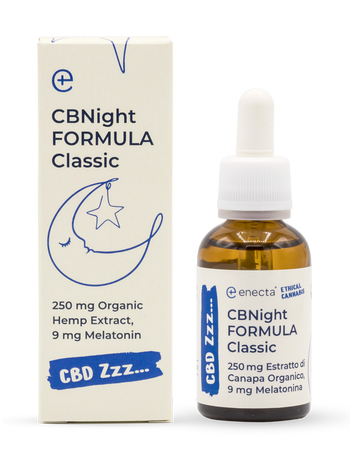Cannabis growers are often faced with questions ranging from choosing the best cannabis seeds to grow, to the potential uses of biomass for extraction and to what certifications are needed to grow cannabis plants regularly.
In this article we will try to shed some light, focusing on:
- Cultivation of industrial hemp
- Biomass for extraction: what is it used for?
- Techniques for growing industrial hemp
- Hemp processing
Cultivation of industrial hemp
Cannabis sativa is a species of the Cannabinaceae family, cultivated in China since 2800 BC. The crop spread rapidly from China all the way to Europe.
Historically, it has been used for recreational purposes in religious rituals and as a medicinal plant with curative qualities. Later, given its richness in nutrients, it was also used as food and raw hemp seed oil and, of course, as a fibre for the production of textiles and ropes.
Did you know that the ropes of Christopher Columbus' caravels were made of hemp? If they had not been so strong, they might not have led him to discover America.
From the mid-18th century, hemp seeds were regularly planted in Europe, China, the Soviet Union and North America to produce high-quality fibre, rope and cloth. Meanwhile, John Ford was successfully experimenting with hemp for the production of fuel and eco-friendly cars.
Since the 1930s, cannabis growers have been facing problems due to the prohibitionist movement that started in the United States and Canada and quickly spread globally, which imposed taxes and bans on the cultivation of cannabis/hemp plants.
Behind this choice there was undoubtedly a prejudice against the recreational use of cannabis varieties with a high THC content (only many years later, varieties with a high CBD content were produced), but also a certain need to avoid the potential of cannabis seeds and plants threatening certain economically very profitable sectors, such as the petrol industry.
In Italy, too, the fascist regime banned hemp production and cannabis growers were converted into soldiers.
However, the outbreak of World War II and the relative difficulty in importing fibre temporarily ended the bans and restrictions. Hemp was so essential that the US Department of Agriculture even produced an educational video to train and motivate new cannabis growers.
With the end of the war, however, the bans were re-established and the investments allocated to other crops.
Also in China, the Soviet Union and Europe, prohibition had regained the upper hand. It must also have been the invention of acrylics, as well as the easier availability of other synthetic fibres such as nylon and polyester, that was one of the main reasons for the gradual disappearance of hemp from industry.
The ban on the cultivation of cannabis plants for industrial purposes was only revoked in 1998 and officially regulated by the Hemp Regulation Program (as far as the USA is concerned), a document that certainly inspired subsequent ones all over the world. In order to keep the quality and active principles contained in cannabis plants under control.
Today (in Italy), with Law 242/16 on the Provisions for the promotion of the cultivation and the agro-industrial chain of hemp, it is possible to grow cannabis plants for industrial purposes as long as certified cannabis seeds (included in the Common European Catalogue) are planted and the THC content is kept between 0.2 and 0.6%.
It is possible to grow cannabis plants high in CBD (cannabidiol) or CBG (cannabigerol), which do not cause any psychotropic effects. A cannabis variety with a high CBD content not only provides us with the same benefits as hemp (textile, energy, chemical) but also opens up a thriving market.
Due to its therapeutic properties and its very recent success (Epiodiolex, the first cbd-based anti-epileptic drug), there is an increasing demand for high-quality cbd.
Demands come not only from the pharmaceutical sector but also from the food-nutraceutical sector where there is a trend towards highly nutritional natural products. This is the reason for the success of CBD oil.The cosmetics sector is also investing more and more in cannabinoid-based assets.
It could be said that we are at a point in history where cannabis growers or entrepreneurs who want to invest in the best cannabis seeds to create high quality cbd products, have a successful future.

Biomass for extraction what is it used for?
Hemp biomass is made up of certain parts of the plant material produced by cannabis plants, mainly the flowers, which contain phytocannabinoids with a high content of active principles. The other parts of the plant such as leaves, seeds, branches and stems are used according to their intended purpose.
It is biomass that is the raw material from which CBD is extracted.
Biomass is used for the production of:
- Cbd oil
- Ultra-pure crystals with high cbd content
- Cannabinoid-based medicines
- Hemp and cannabinoid edibles
- Cannabinoid-based cosmetics
- Cannabinoid e-liquids
- Fabrics
- Paper
- Fuel (hemp biodiesel)
- Renewable energy
The versatility and potential of biomass are remarkable. However, it is important for cannabis growers to choose certified seeds in order to start their own cultivation and manage it in the best possible way, or alternatively to opt for ready-made but certified biomass. In both cases, certification ensures that the products meet a set of European standards that guarantee high quality, stability and a good return on your investment.
Clearly, there are also a whole series of conditions and standardised processes to be respected, related to the environment and subjective factors.

Cultivation techniques
If you intend to become a legal cannabis grower, you will have to choose between regular seeds, feminised cannabis seeds or auto-flowering cannabis seeds.
The important thing: whatever your choice, buy certified seeds.
Regular seeds produce a 50% female and 50% male plant. These are very robust cannabis plants, ideal for fibre production and processing hemp into biomass for extraction and also for those who have an interest in seed collection.
Feminised seeds are more suitable for those interested in harvesting only inflorescences rich in trichomes and, therefore, in active ingredients, as the plant does not 'waste' energy in seed production following pollination.
Finally, autoflowering cannabis seeds are for all those keen cannabis growers who are short on time or simply want to speed up production. Cannabis plants produced from autoflowering seeds are ready for harvest in about two months from seed germination.
Once you have chosen the best hemp seeds, you have to be careful how you store them. Storing the seeds is easy, but neglecting to take certain precautions could ruin them. Exposure to direct sunlight should be avoided; a dark, non-humid place, protected from sudden changes in temperature and draughts is preferable. It is also best to avoid handling them with your hands unless they are very clean, as any bacteria could contaminate them.
Preserving seeds is the responsibility of those who buy them but also of those who produce them.
During storage, we ensure that our products are properly stored and protected, always guaranteed, traceable and safe. We have developed the most suitable conditions for handling and shipping seeds and ensure that seed batches are always fresh and carefully preserved.
Now that you have your hemp seeds, follow this small and very useful guide divided into six steps:
Land preparation:
It is important to prepare the soil by ploughing at least 30 centimetres deep. The soil should be well drained and free of depressions.
It is advisable to carry out a soil analysis to ensure the absence of chemical residues, which can be harmful to your product.
To keep the soil drained, light and airy, something natural such as perlite or expanded clay should be used.
Fertilisation:
During the vegetative phase, cannabis plants need a significant amount of nitrogen, which should always be checked. In the flowering phase the amount of nitrogen should be reduced, but it is important to keep the amounts of magnesium, potassium and phosphorus high. It is advisable to fertilise your plants naturally using compost, manure and slurry.
Sowing:
It is advisable to start in late spring, starting from April. If placed directly in the ground, each seed should be placed 1.5 to 2 cm deep and the distance between the seeds should be about 3 cm. We are still talking about a density of 7000 to 10000 hemp seeds per hectare. (for biomass production and for inflorescences it is lower and depends on the variety).
Weed control:
Cannabis plants are particularly resistant to weeds, but it is wise to monitor them even before sowing and to continue to do so throughout the germination phase when the cannabis plant, whether sativa or indica, is most fragile and delicate.
Irrigation:
outdoors cannabis plants usually self-regulate with the rain cycle or supplementary tanks, but indoors or in particularly droughty conditions, an adequate amount of water must be ensured. More water is especially needed just before the flowering phase to stimulate the growth of a good leaf apparatus, as well as after the flowering phase to harvest solid seeds.
Flower harvesting and seed collection:
depend on the type of harvesting one wants to perform; one can harvest them all together, once the plant has reached full maturity. Considering that seed harvesting only takes place in the preparation of seed crops; for example, in the case of inflorescence production, male plants should absolutely not be present at all, so seed harvesting must not take place because male plants are eliminated beforehand. When the stems of the cannabis plants are still green, the seed is harvested, which can be done with normal threshers or threshers with an axial beater.
Finally, it is time to cut and harvest the rest of the plant matter, which we will need for the production of extraction biomass.

Hemp processing
When harvesting the plant material, we proceed with drying it in a dark place. The processing is different for biomass and inflorescences. Moisture must be stable and not exceed 40%, for biomass we use ventilated ovens, for flowers temperature and moisture control is all that is needed. The extraction of fibre is done by mechanical fraying, which must then be processed. Appropriate technological tools designed to facilitate this operation will be needed.
For the production of biomass, the plant material is handled in production batches, i.e. coming from the same field and processed in the same way, trying not to mix different varieties with different characteristics. This is to ensure that all biomass has and maintains the same cbd contents.
The packaging and storage processes are very delicate, they serve to preserve our product in the best possible way and they must be carried out with the highest levels of hygiene and safety to ensure a high quality product over time.
More info:
info@enecta.farm








































